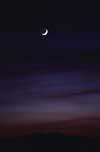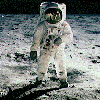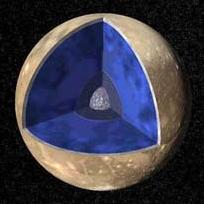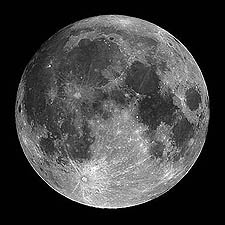 |
The Moon |
|
 |
The Moon |
|
|
Orbit and Rotation
|
 |
 |
Exploration
|
|
General Structure and Interior
|
 |
 |
Surface
|
|
Formation and Evolution
|
_398x480.jpg) |
| * Astronauts left on the Moon objects including an American flag, a seismic detector, and a laser reflector. Humans also littered the landscape with everything from food wrappers to the backpacks that kept them alive while they roamed one small corner of Tranquility Base. They even left their boots (and a golf ball). |
![]()
page by luca bombelli <bombelli at olemiss.edu>, modified 7 oct 2013